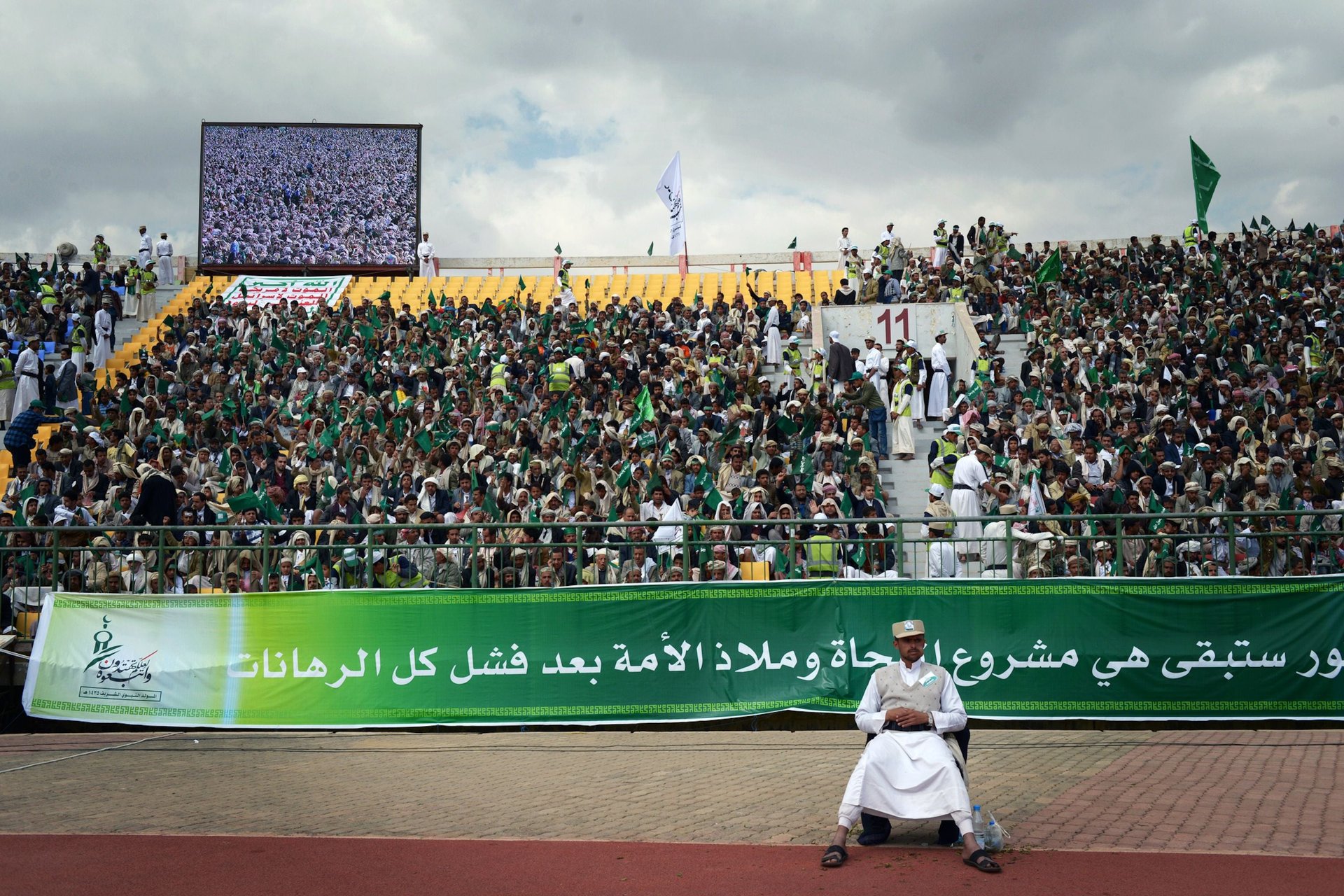The Houthi coup in Yemen is a new political era that may end in ruin
In September 2014, Yemen entered into a new political era. The Houthis, a Zaidi Shia revivalist group with a militant wing ended their month-long demonstrations in Sana’a after government forces killed nine peaceful protesters. Houthi fighters amassed in northern Sana’a, defending their positions and taking back that which was controlled by their rivals: the government and opposition tribes. After four days of fighting, the Houthis—once a small rag-tag group of rebels from the north—controlled the State TV, Ministry of Interior, and the infamous army Firqa Camp, commanded by their archrival Ali Mohsen al Ahmad.


In September 2014, Yemen entered into a new political era. The Houthis, a Zaidi Shia revivalist group with a militant wing ended their month-long demonstrations in Sana’a after government forces killed nine peaceful protesters. Houthi fighters amassed in northern Sana’a, defending their positions and taking back that which was controlled by their rivals: the government and opposition tribes. After four days of fighting, the Houthis—once a small rag-tag group of rebels from the north—controlled the State TV, Ministry of Interior, and the infamous army Firqa Camp, commanded by their archrival Ali Mohsen al Ahmad.
The peace deal that followed, signed by all political parties in Yemen, the Houthis demanded—and received—extended political power, a change in government, and an economic plan moving forward. The Houthis single-handedly managed to accomplish what nine months of Yemen’s National Dialogue (post-revolution peace talks) could not: the ouster of old powers, and rise of new. They are now Yemen’s Kingmaker: one with enough political support, fighting force, and financial backing (whom detractors say comes from Iran) to lift anyone they please up to power.
In the three weeks since the Houthis success, even citizens who did not support their aims admit that life in the capital have improved: electricity runs nearly all day, as opposed to 12-hour cuts, water comes when it’s needed instead of having to order it by truck, and even traffic runs smoother.
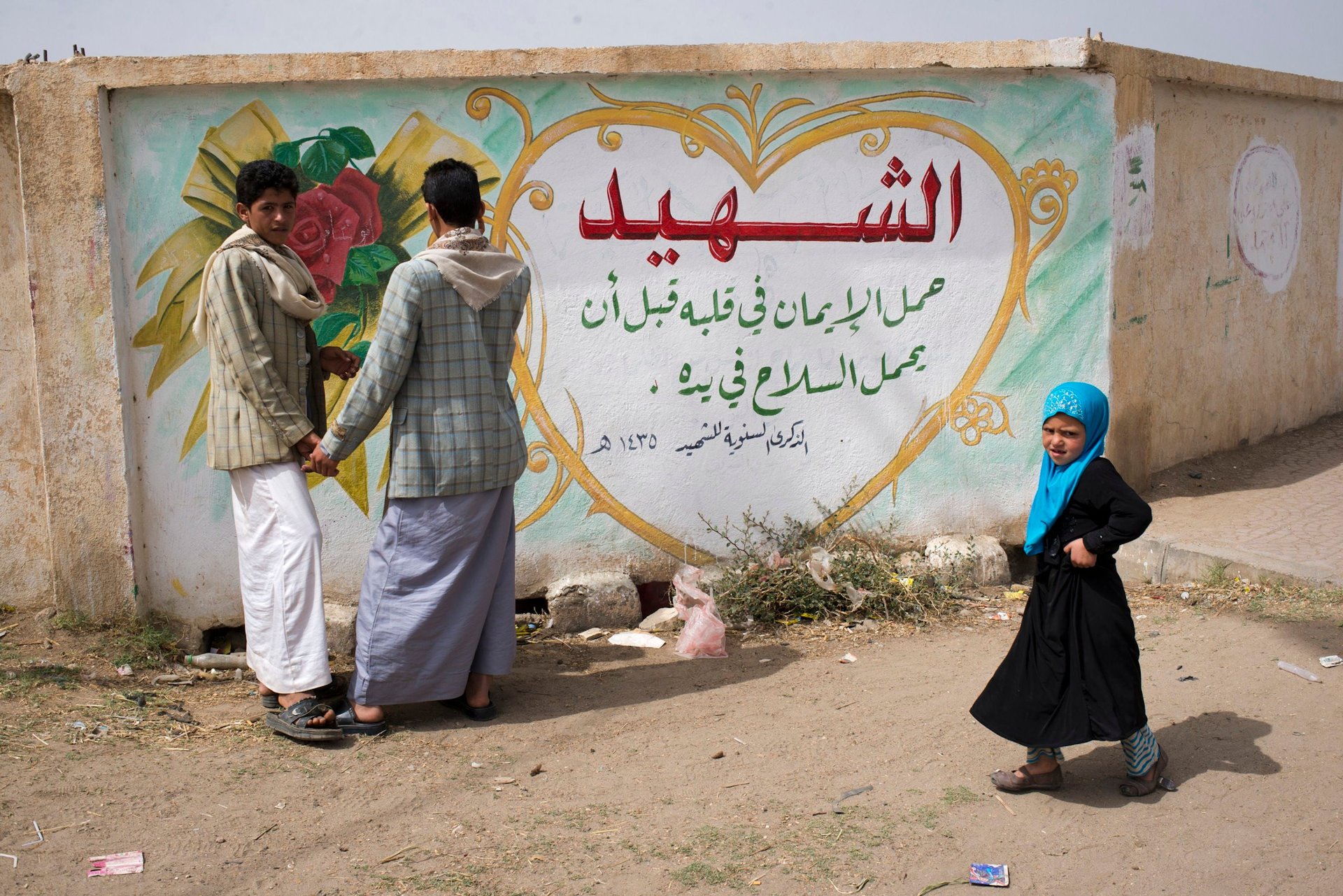
Over an email interview, one young Houthi supporter said, “We seek safety, justice, independence, rule, and order…Give Yemeni people safety and security, and they will give their full support.”
Yet the new order and supposed political progress does not change the fact that a militia is in control of the city. Nearly all military checkpoints, which numbered in the dozens around Sana’a, are now manned by Houthi fighters or their supporters, complete with their searing slogan printed in green and red: “Death to America, Death to Israel, Damn the Jews, Victory to Islam.”
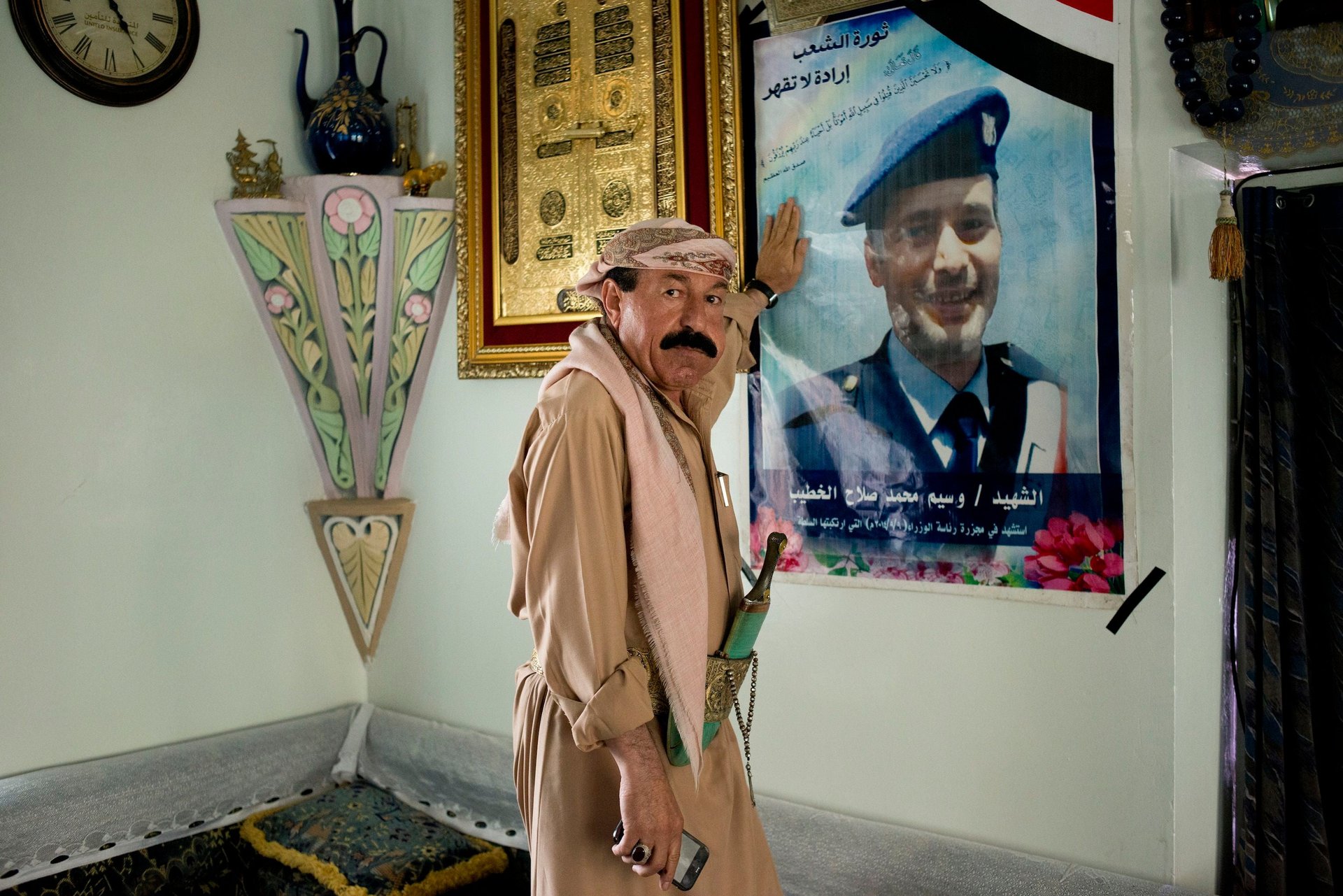
Houthi leadership claims this slogan is aimed at said governments, not civilians. And indeed, the Houthis have never attacked Western interests. Quite the opposite in fact. In all the areas of Yemen the Houthis have control, Al Qaeda is nowhere to be found. When AQ supporters and Houthi militias have gone head to head in provinces like Jawf and Mareb, the Houthis have unequivocally come out on top. Though international analysts fear these are words of war, the Houthis have thus far proven their rhetoric true: though not friendly toward America’s government, Al Qaeda is the ever present enemy to the Yemeni people, and must be eliminated.
How the Houthis came to power
For thousands of years, northern Yemen was governed by a series of Imams: religious sovereigns who ruled the rugged land through political savvy and authoritarian leadership. The Imams followed the Zaidiyyah, a Shia-derived tradition of Islam that stressed the need for a visible ruler, one supposedly descended from Mohammad himself. Some exemplified the characteristics of an Imam, knowledge of Islam, community leadership, and success on the battlefield, like Arwa al-Sulayhi, the female leader who led Yemen to success on the battlefield and a booming economy. Yet others, such as the penultimate Imam Ahmad bin Yahya, focused their efforts on modernizing the military.
After the Imamate was abolished in the Egyptian-supported coup-d’état in 1962, Yemen cycled through a series of assassinated presidents until Ali Abdullah Saleh, the one who had enough political savvy to control rival tribes and keep himself from assassination or a coup. Saleh’s rule extended for over 30 years, the first extended time the Tribes had more political power than the Sayyids, and the class system was turned on its head.
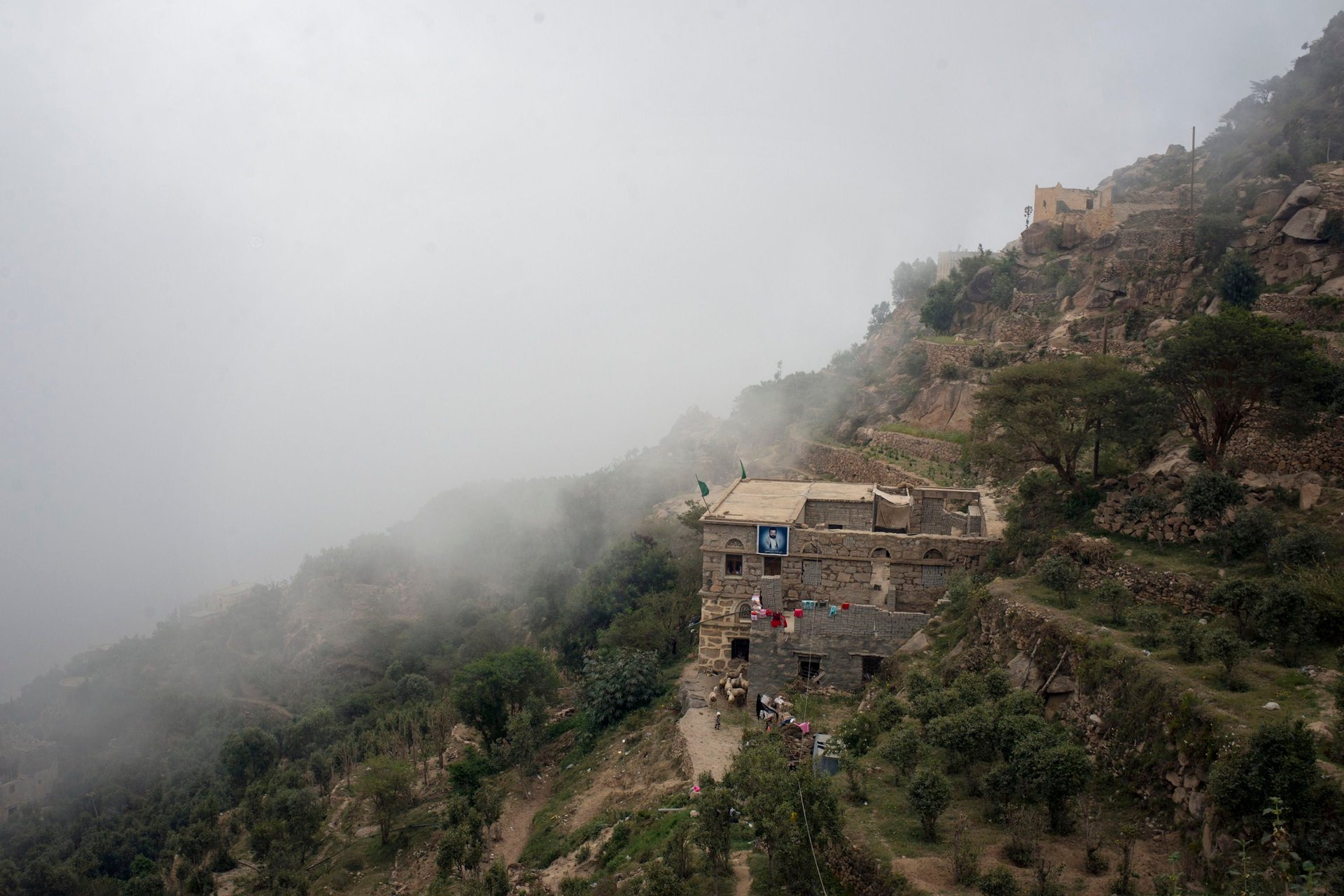
So came the Houthis rise to power. From the early 1990s until Yemen’s 2011 revolution, they gained physical ground, ideological influence, and political sway. Beginning as a religious revival group, the tribesmen and Sayyid descendants looked to their leader and namesake, Hussein al Houthi, to lead them out of forgotten corners of Yemen back onto the political scene. In 2004, as a reaction to the US invasion of Iraq and Afghanistan, al Houthi shouted the now infamous slogan in the largest mosque in Sana’a: “Death to America, Death to Israel, Damn the Jews, Victory to Islam.”
As a response, former President Saleh waged guerrilla mountain war against Houthi and his followers from 2004 to 2009, led by former General Ali Mohsen al Ahmar, completely destroying the northern province of Sa’ada with the help of Saudi fighters and American missiles. Though Hussein al Houthi was killed in the first war of 2004, his enigmatic brother Abdul Malik, who still leads the movement today, quickly took the reins.
The Houthis joined the revolution, supporting independent youth after it was hijacked by Yemen’s Islamist party, Islah—the party of then-General Ali Mohsen al Ahmar, who led the wars against the Houthis. After the revolution boiled down to infighting between power-hungry political groups, the Houthis slowly gained ground in the northern provinces of Amran and Jawf, strongholds of the Al Ahmar family. In the process, they flattened two schools—Dammaj and Kitaf—infamous for recruiting foreigners into extreme Sunni ideology that the Houthis saw as feeder schools for Al Qaeda fighters.
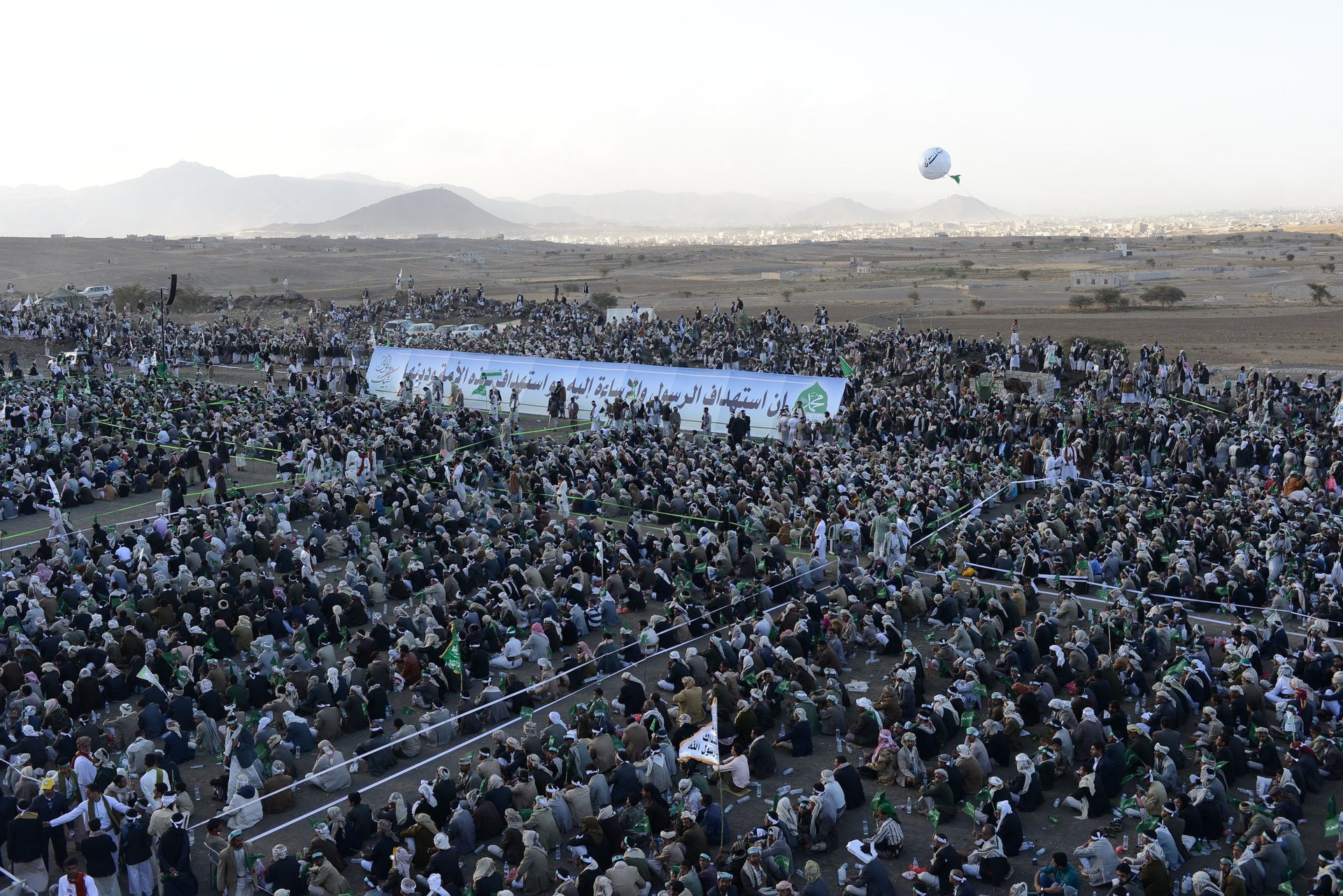
The push to the south continued throughout 2013 and 2014, til Houthi fighters sat at nearly all entrances to Sana’a. Abdul Malik al Houthi called for mass protests to return fuel subsidies and form a new government, which still hadn’t been done in the post revolution political foot-dragging. After government forces killed nine unarmed protesters in Sana’a, the heavily armed tribal fighters pushed into the edges, battling with troops loyal to Al Ahmar over a week in late-September. When the dust settled, the Houthis unequivocally controlled a number of state offices and nearly every major entrance to Sana’a.
“When they took over, I cried honestly. There is something else going on, something we don’t see,” said Safa, a 24 year old student in Sana’a.
A new regional order
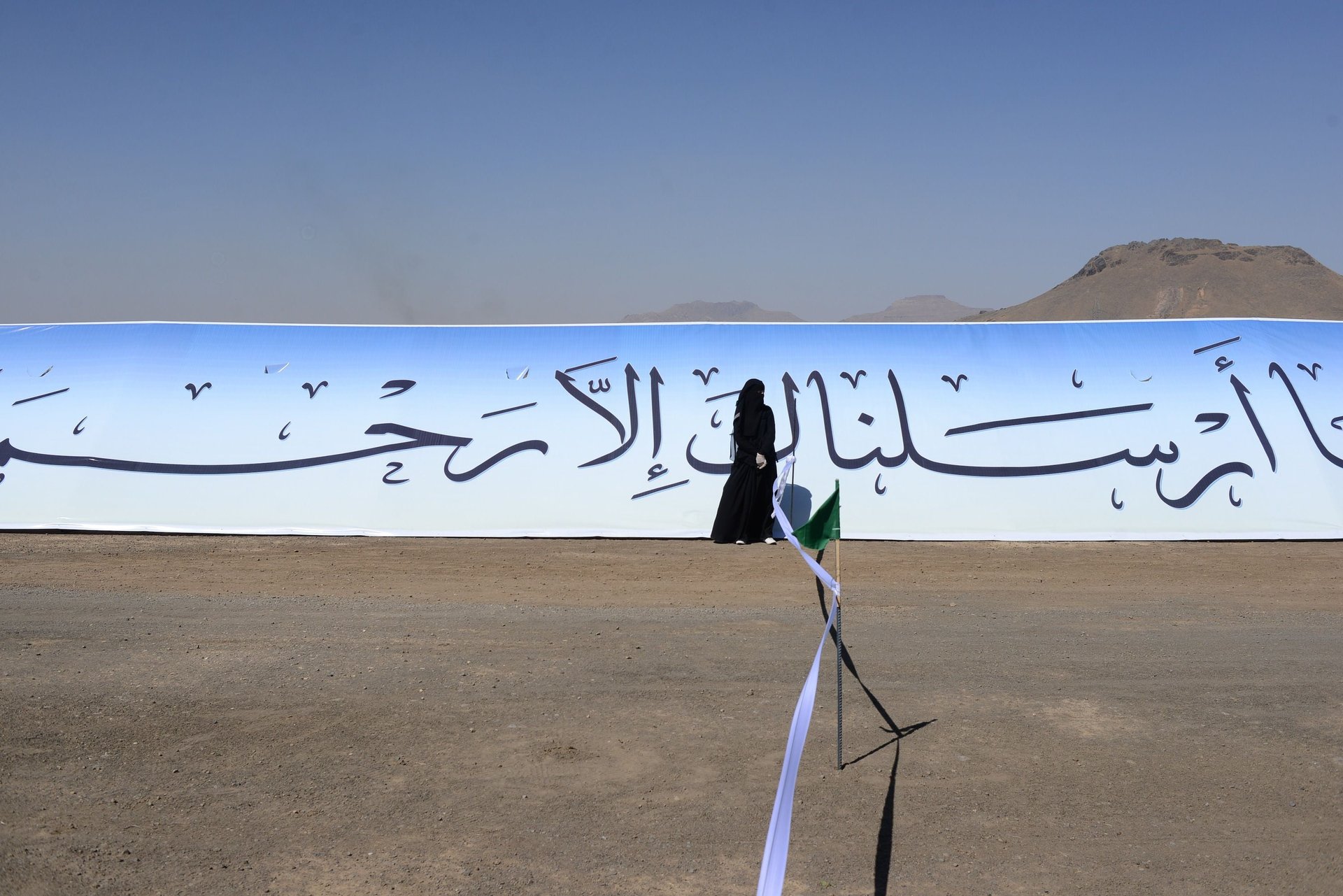
The Houthi takeover turned Yemen’s political tables, not only nationally, but regionally as well. Saudi Arabia has long held Yemen under it’s thumb, keeping it in a delicate balance of poverty and unrest, never enough to thrive, and never enough to spill into chaos, ensuring the necessity of their Sunni-Salafi influenced government interference in Yemen. Yet the Houthis are supposedly backed by Iran (though their leadership and followers vehemently denies this); even if no money is involved, Iran approves of the Houthi take-over. The regional power struggle that is sure to follow between Saudi Arabia and Iran complicates political decisions for allies and enemies of Yemen alike.
For now, the Houthis’ main opposition is Al Qaeda. What began as a tribal quarrel for revenge and the return of ideology, has quickly gained sectarian elements. On Oct. 9, Al Qaeda detonated a suicide bomb just before a Houthi rally in Tahrir Square, at the very center of Sana’a. The explosion killed 47 people and injured hundreds more. In their statement that claimed responsibility for the attack, Al Qaeda leaders promised “hundreds more bombs” in the future.
With each passing day, the Houthis gain more ground to Yemen’s south, and mostly, without a fight. They are reportedly gaining control in Taiz and Ibb, traditionally centers of Sunni Islam in Yemen, and Hudaydah, a poor coastal province, but one with extended access to the Red Sea. In Yemen’s extreme southwest corner lies the narrow waterway of Bab al Mandab, connecting the Gulf of Aden with the Red Sea, and by extension, with the Mediterranean. For anyone hoping to direct trade to and from Yemen, control of Bab al Mandab is of utmost importance, and if the Houthis keep up their campaign, they will soon own it.
The Houthi coup was so stealthy, the rest of the world barely noticed, and few realize how dramatically their control could change Yemen. Yet what is still unclear is whether they will help build Yemen for the better, or bring the country to ruin.
